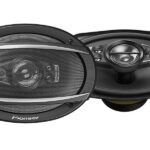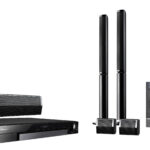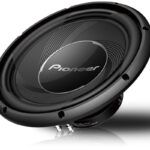To tell if a record is scratched, look for visible marks or scratches on the surface of the record. When examining the record, hold it up to a light source and check for any blemishes that may affect playability.
Introducing a scratched record into your collection can be disappointing, especially if you’re a vinyl enthusiast hoping for flawless sound quality. Scratches on records can result in skips, pops, and distortion, compromising the overall listening experience. Therefore, it’s crucial to know how to identify if a record is scratched before purchasing or playing it.
Luckily, there are simple ways to determine the condition of a vinyl record just by visual inspection. By following a few steps, you’ll be able to assess whether a record has visible marks or scratches that may affect its playability and sound quality. This allows you to make informed decisions when building your vinyl collection and choose records that will provide the best listening experience.
Visual Inspection
Visual inspection is an important step in determining whether a record is scratched. Start by looking for visible scratches on the surface of the record. Pay attention to any deep gouges or grooves, as they can affect the playback quality. Additionally, check for hairline cracks or spiderweb-like patterns, as they indicate more serious damage. Don’t forget to examine the edges of the record as well, as they are prone to damage. If you notice any scratches, cracks, or damage, it’s likely that the record is scratched and may affect the sound quality when played. Taking the time to visually inspect a record before playing it can help you avoid potential disappointment or damage to your turntable’s stylus.
Audio Testing
How to Tell If a Record is Scratched
Listen for **skipping or repeating sections** of a song. Scratches on a record can cause the needle to skip or repeat certain parts of a song. This can be an easy way to identify if a record is scratched. **Pops, clicks, or static noises** are also common indicators of damage. A scratched record may produce these unpleasant sounds, which can significantly impact the listening experience.
Another thing to consider is **distortion or muffled sounds**. When a record is scratched, it can result in distorted or muffled audio. If you notice any inconsistency in sound quality while playing a record, it could be a sign of damage. **Sudden changes in volume or tone** can also be a red flag. If you notice abrupt shifts in volume or an altered tone during playback, it may indicate scratches or other issues with the record.
| Signs of a Scratched Record |
|---|
| Skipping or repeating sections of a song |
| Pops, clicks, or static noises |
| Distortion or muffled sounds |
| Sudden changes in volume or tone |
Using A Magnifying Glass
Using a magnifying glass can be an effective way to examine records for scratches. By closely examining the grooves under magnification, you can look for signs of wear or damage. Scratches may appear as lines or grooves that disrupt the smooth surface of the record, causing distortion in the sound. It’s important to carefully inspect the entire surface of the record, paying special attention to areas that are more prone to scratches, such as near the edges. Additionally, check for any buildup of dirt or debris in the grooves, as this can also affect the quality of the sound. By taking the time to examine your records closely, you can determine if they are scratched and in need of repair or replacement.
Consult A Professional
Consulting a professional is a wise choice when determining if a record is scratched. Seek advice from a record store or experienced collector to gain valuable insights. They can provide expert guidance based on their years of experience and knowledge. Additionally, it may be beneficial to consider getting a professional evaluation or cleaning done for your record. Professionals have the necessary tools and expertise to assess the condition of records accurately.
You can also ask professionals about restoration techniques that can be used for severely scratched records. They may recommend various methods to improve the quality of the record, such as using specialized cleaning solutions or repairing the surface with specific equipment. These techniques can help restore the sound quality and preserve the value of your record collection.
Preventing Scratches
Preventing scratches on your records is essential to ensure the best audio quality and longevity of your collection. There are several steps you can take to minimize the risk of scratches:
1. Handle records with clean hands and avoid touching the grooves. Oils and dirt from your hands can leave residue on the surface and potentially cause damage.
2. Store records properly in protective sleeves and cases. These help to shield them from dust, moisture, and accidental bumps that could lead to scratches.
3. Use a high-quality turntable and stylus. A well-built turntable with a good tonearm and a high-quality stylus will minimize the risk of damaging your records during playback.
4. Clean records regularly to remove dust and debris. Use a carbon fiber brush or a record cleaning machine to gently remove particles that might cause scratching.
By following these guidelines, you can enjoy your record collection without worrying about unwanted scratches that can negatively impact your listening experience.
Regular Maintenance
Regular maintenance is essential to ensure the longevity of your record collection. To keep your records in optimal condition, it is important to inspect them on a regular basis. Give each record a once-over, checking for any visible scratches or gouges on the surface. Clean your records before and after every use to remove any dirt or dust that can cause damage. Use a soft brush or a microfiber cloth to gently wipe away any particles. Remember to keep your records away from direct sunlight as prolonged exposure can lead to warping and fading of the record cover. Extreme temperatures should also be avoided, as they can cause the vinyl to expand or contract, potentially leading to cracks or warping. By following these maintenance tips, you can keep your records scratch-free and in excellent condition for years to come.
Conclusion
To sum it up, recognizing a scratched record is crucial for preserving the quality of your vinyl collection. By paying attention to audible cues such as skips, pops, and repetitive noises, as well as visual indicators like visible scratches and scuffs, you can accurately determine if a record is scratched.
Regularly inspecting and properly handling your records will ensure an enjoyable listening experience for years to come.
Frequently Asked Questions For How To Tell If A Record Is Scratched
How Can I Tell If A Record Is Scratched?
To check if a record is scratched, carefully examine the surface under good lighting. Look for visible lines, bumps or any damage that can affect the playback. Run your fingers lightly over the surface to feel for any grooves or rough spots.
Additionally, listen for any skipping or repeating sounds when playing the record.
What Causes Record Scratches?
Record scratches can be caused by various factors including mishandling, dust particles, dirt, or a damaged turntable needle. Accidental drops or improper storage can also result in scratches. It’s important to handle records with care and ensure your turntable and needle are in good condition to minimize the risk of scratches.
Can Scratches On Records Be Fixed?
While it is not possible to fully repair deep scratches, there are some methods to minimize their impact. Using a record cleaning brush, gently remove any loose debris from the surface. Applying a specialized record cleaning solution and using a microfiber cloth can also help improve playback.
Alternatively, consider seeking professional record restoration services for extensive damage.








